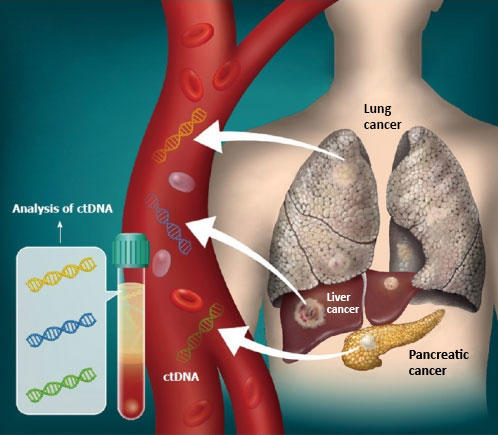In a record setting year for Lawrence Livermore National Laboratory (LLNL), four teams of LLNL researchers will attend the Department of Energy's (DOE) Energy I-Corps (EIC) Cohort 20 this spring.
The EIC is a key initiative of the DOE's Office of Technology Transitions, and facilitated at LLNL by Hannah Farquar from the Innovation and Partnerships Office (IPO). Established in 2015, EIC pairs teams of scientists with industry mentors to train researchers in moving DOE lab-developed technologies toward commercialization.
"LLNL was one of the first national laboratories to pilot the EIC program and its impact has improved the market viability of mission-critical research done at the Lab and the skills of our workforce - broadening the reach of our scientific breakthroughs," said Farquar. "This is quite the year for LLNL as we've never had four teams in one cohort before."
The goal of the program is to define technology value propositions and explore viable market pathways for new technologies. LLNL researchers accepted to the program return to the Lab with a framework for industry engagement to guide future research and inform a culture of market awareness. LLNL technologies that are able to be commercialized through tech transfer go on to support national security and U.S. economic competitiveness.
Each year, EIC invites teams of researchers to participate in an immersive, two-month entrepreneurial training program. Each team is composed of a principal investigator (PI) and entrepreneurial lead (EL) from a national lab, paired with an industry mentor. Selected teams are provided funding to support their participation in the training.
The LLNL teams are focused on fluid heat optimization, advanced management systems for energy transmission, battery technology for next-generation energy storage and scalable additive manufacturing for inertial fusion energy and high-energy density science.
PNS Heat Optimization
This team comprises LLNL PI Pratanu Roy and EL Nathan Ellebracht with industry mentor Eric Ping, carbon management development specialist at Sargent & Lundy.
They developed advanced geometries - called periodic nodal surfaces (PNS) and triply periodic minimal surfaces (TPMS) - to create more efficient heat exchangers, fluid contactors and reactors. Inspired by nature and optimized via 3D simulation, these interconnected structures mix fluids far better than traditional designs. Superior mixing improves heat and mass transfer, enabling compact, efficient systems for heat recovery, energy savings and carbon capture. Team funded by Office of Fossil Energy and Carbon Management.
XGridDS
This team comprises LLNL PI Indrasis Chakraborty with industry mentors Byron Kaufman, founder and CEO of Grid Science, and Mary Ngo from Pacific Sciences and Engineering Group, Inc.
They developed a user-centered design process for electrical grids to understand the goals, tasks, informational needs, challenges and gaps facing transmission and distribution system managers. This process will address cognitive and perceptual factors to improve workflow and decision-making. The resulting solution, XGridDS, offers unique, interoperable features that are not found in current advanced management systems for electrical grids; typically limited by specific software infrastructures. Team funded by the Office of Electricity (OE).
SCu-CAB
This team comprises LLNL PI Erika Paola Ramos Guzman and EL Diego Ignacio Oyarzun Dinamarca with industry mentor Ionel Stefan, CTO of Amprius Technologies.
SCu-CAB (Scalable Cu-Based Current Collector for Advanced Battery Systems) is a battery technology that uses abundant and sustainable copper instead of critical materials like nickel, cobalt and lithium, addressing supply chain challenges. This copper-based current collector improves battery performance and lifespan with a scalable, cost-effective manufacturing process. The technology is especially impactful for next-generation energy storage in electrification applications, where high energy density and low mass are crucial for performance. Team co-funded by DOE's Advanced Materials and Manufacturing Technologies Office and the OE.
IgniteAM
This team comprises LLNL PI Eric Duoss and ELs Xiaoxing Xia and Raspberry Simpson, with industry mentor Eugene Chow, associate director of advanced technology at Raytheon, an RTX Business.
IgniteAM is a scalable additive manufacturing solution for producing high-performance ignition targets, essential to inertial fusion energy and high-energy-density science. It addresses a key challenge in creating precision components for laser-driven fusion and experimental laser facilities. By enabling efficient and reliable target fabrication, IgniteAM supports the emerging fusion energy industry and advances research into next-generation energy solutions. Team funded by the Office of Science-Fusion Energy Sciences.
The other 13 teams in Cohort 20 include researchers from Argonne National Laboratory, Brookhaven National Laboratory, Idaho National Laboratory, National Renewable Energy Laboratory, Oak Ridge National Laboratory, Sandia National Laboratories and Thomas Jefferson National Accelerator Facility.
The opening session for the 17 teams coming from across DOE national laboratories will be held in Colorado from March 17-21, 2025. The closing session will be held from May 27-30, 2025, in Washington, D.C.
Each year there are typically two calls for applications: one in April and another in October. Spring 2025's EIC Cohort 20 consists of applicants from the October 2024 call. LLNL has sent nine previous teams for training and network building at EIC since the program started a decade ago. The next call for applications will occur this fall.
- Melissa Lewelling






